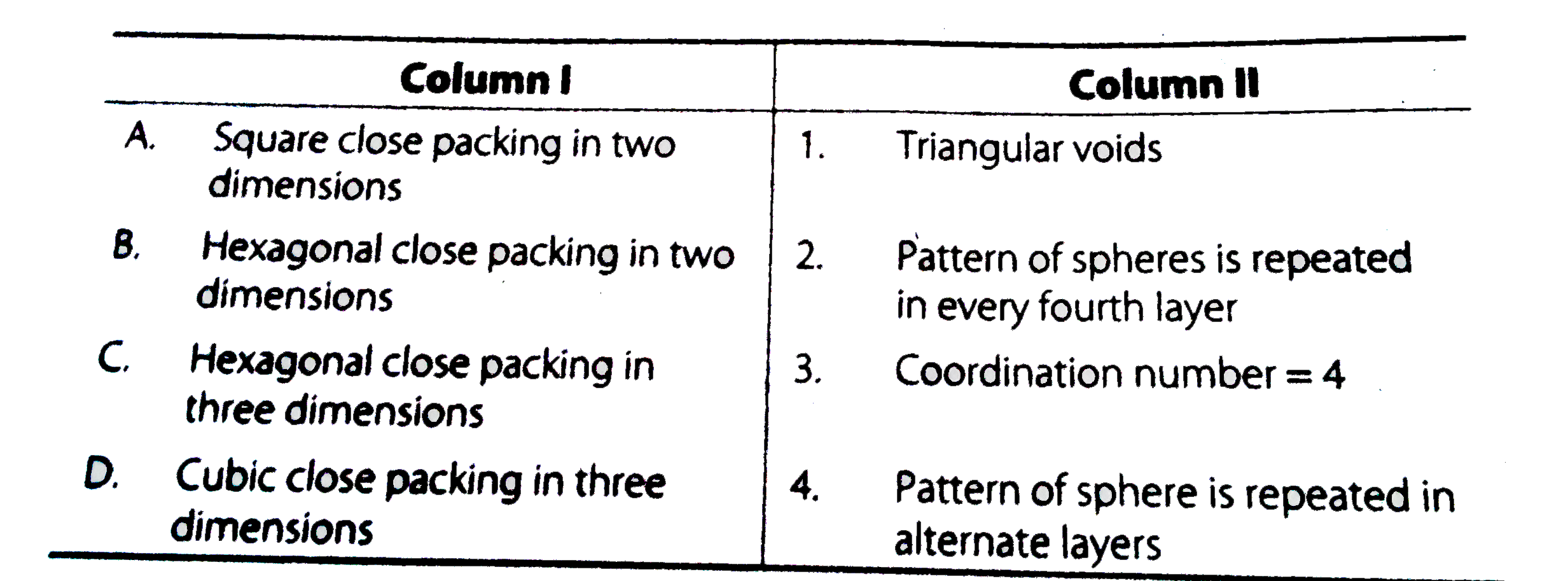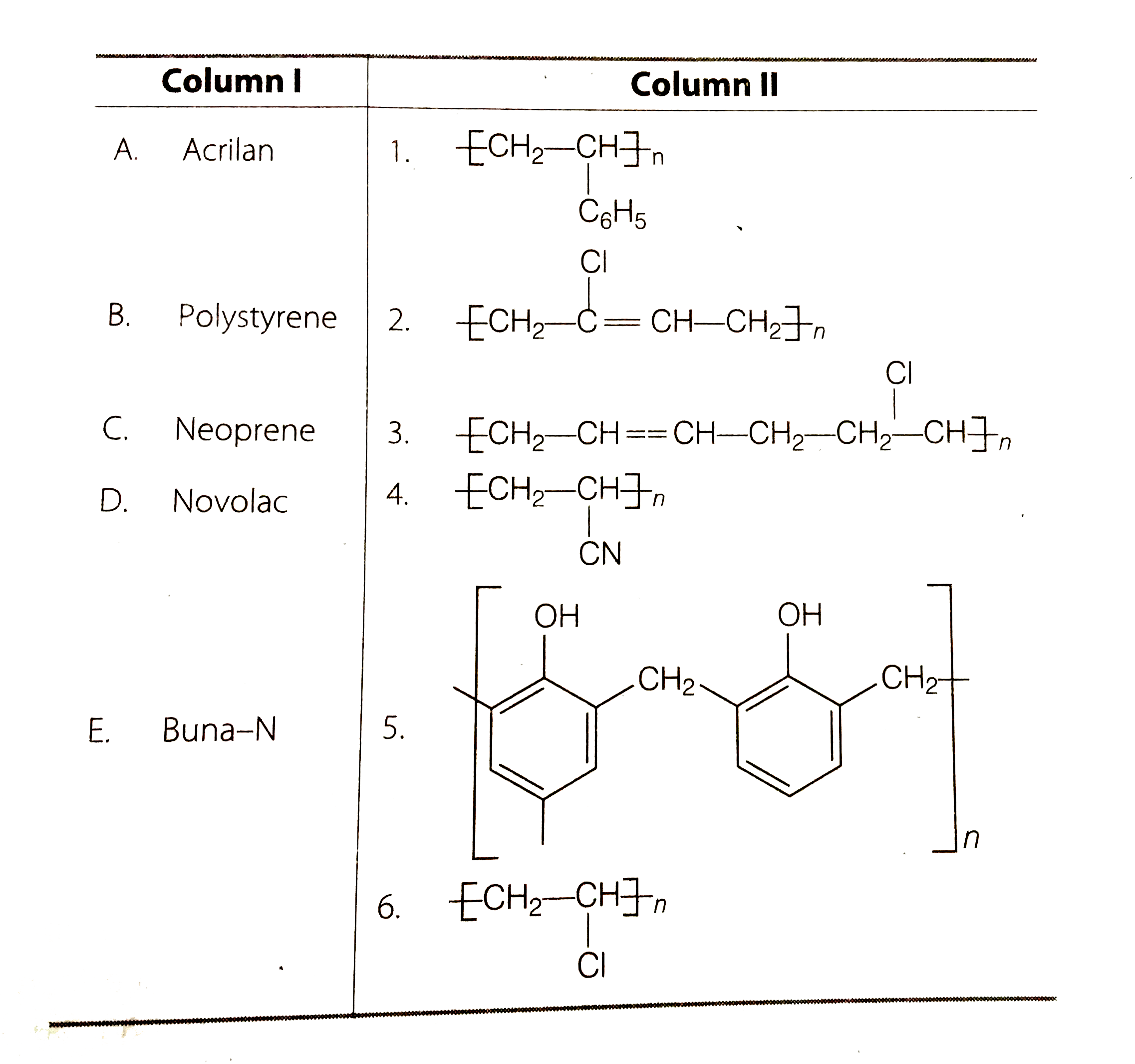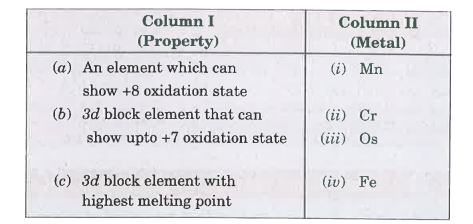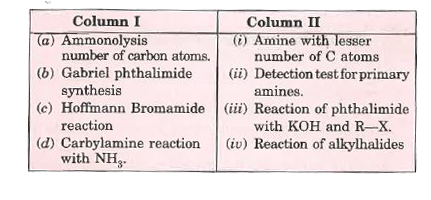Match the hydrocarbons in column-I with the boiling points given in column-II.

The correct Answer is:(A-2), (B-3), (C-1)
n-Pentane : In n-pentane there is no branching and surface area. Hence, more Van der waal.s forces. There fore, boiling point is high.
(B) Iso pentane : Molar mass is same but one branch is there which reduces its surface area. Hence, the boiling point is less.
(C) Neo-pentane : In this compound two side chains are there having the same molar mass. Therefore, its boiling poing is lowest amongst all three compounds.
Topper's Solved these Questions
- BOOK - KUMAR PRAKASHANCHAPTER - HYDROCARBONSEXERCISE - Section - D (NCERT Exemplar Solution) (Assertion and Reason Type)4videos
HYDROCARBONS
- BOOK - KUMAR PRAKASHANCHAPTER - HYDROCARBONSEXERCISE - Section - D (NCERT Exemplar Solution) (Long Answer Type )4videos
HYDROCARBONS
- BOOK - KUMAR PRAKASHANCHAPTER - HYDROCARBONSEXERCISE - Section - D (NCERT Exemplar Solution) (Short Answer Type)20videos
HYDROCARBONS
- BOOK - KUMAR PRAKASHANCHAPTER - EQUILIBRIUMEXERCISE - Question Paper from Module7videos
EQUILIBRIUM
- BOOK - KUMAR PRAKASHANCHAPTER - HYDROGENEXERCISE - Section-D NCERT Exemplar (Long Answer)8videos
HYDROGEN
Similar Questions
Match the type of packing given in column I with the iterms given in column II.
 View Solution
View SolutionMatch the type of packing given in column I with the iterms given in column II.
 View Solution
View SolutionMatch the polymers given in column I with their repeating units given in column II
 View Solution
View SolutionMatch the statement given in Column I. with the phenomenon given in column II.
View SolutionMatch the properties given in column I with the metals given in column II
 View Solution
View SolutionMatch the properties given in column I with the metals given in column II
 View Solution
View SolutionMatch the reactions given in Column I with the statements given in Column II
 View Solution
View SolutionMatch the reactions given in Column I with the statements given in Column II
 View Solution
View SolutionMatch the reactions given in Column I with the statements given in Column II.
 View Solution
View SolutionMatch the reactions given in Column I with the statements given in Column II
 View Solution
View Solution

